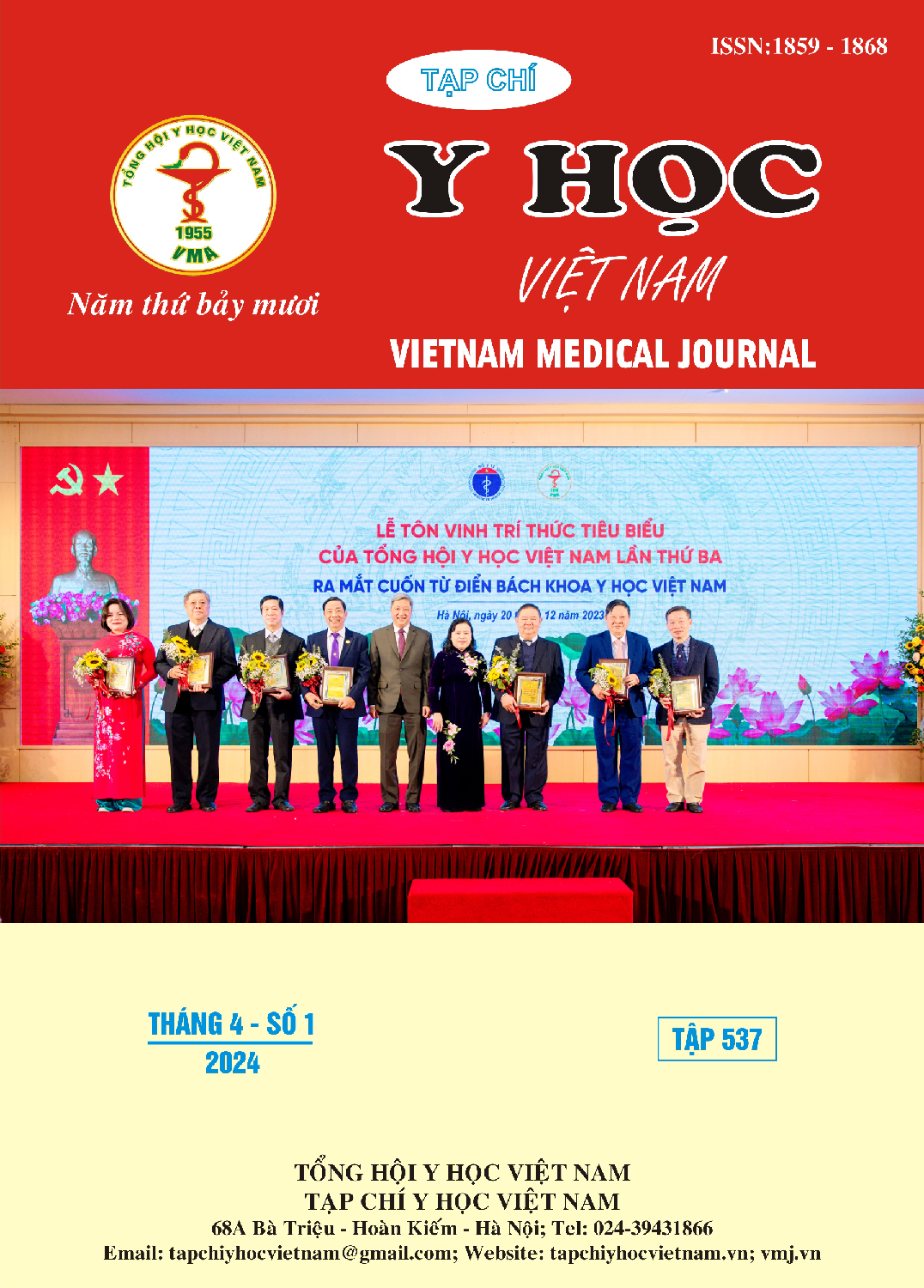RESULTS OF PATIENT CARE AFTER ENDOSCOPIC SUBMUCOSAL DISSECTION TREATMENT OF EARLY-STAGE ESOPHAGEAL CANCER AND RELATED FACTORS AT K HOSPITAL
Main Article Content
Abstract
Objective: Evaluate the results of nursing care and some related factors in early-stage esophageal cancer patients treated with endoscopic submucosal dissection (ESD) method at K Hospital. Methods: Prospective descriptive study on 123 patients diagnosed with early-stage esophageal cancer treated with ESD method at Hospital K from August 2022 to August 2023. Results: Average intervention time was 46 minutes. Complications during intervention include: bleeding (18.7%) and perforation (0.8%). 100% of cases achieved en bloc and negative resection margin. Symptoms after intervention are mainly mild-moderate pain (29.2%), followed by burning (12.2%), vomiting (8.1%). Post-intervention complications include: esophageal bleeding (3.3%) and infection (0.8%). Vital signs after intervention were stable in the majority of patients, with only 3 cases of hypertension recorded at 1 hour after intervention. The average length to stay in hospital was 2.0 days; Lesion size >3cm increases the risk of hospital stay >2 days by 24.28 times (p<0.001). The average feeding time after intervention is 28.7 hours; In most cases, feeding occurs within 24-36 hours after intervention (87.8%). Conclusion: Patient care after ESD is a process that benefits the patient's quality of life and minimizes the risk of post-intervention complications..
Article Details
Keywords
Endoscopic Submucosal Dissection, nursing care, Esophageal cancer
References
2. Okubo Y, Ishihara R. Endoscopic Submucosal Dissection for Esophageal Cancer: Current and Future. Life (Basel). 2023;13(4):892. doi:10.3390/ life13040892
3. Tsujii Y, Nishida T, Nishiyama O, et al. Clinical outcomes of endoscopic submucosal dissection for superficial esophageal neoplasms: a multicenter retrospective cohort study. Endoscopy. 2015;47(9): 775-783. doi: 10.1055/s-0034-1391844
4. Higuchi K, Tanabe S, Azuma M, et al. A phase II study of endoscopic submucosal dissection for superficial esophageal neoplasms (KDOG 0901). Gastrointest Endosc. 2013;78(5): 704-710. doi:10. 1016/ j.gie.2013.04.182
5. Takahashi H, Arimura Y, Masao H, et al. Endoscopic submucosal dissection is superior to conventional endoscopic resection as a curative treatment for early squamous cell carcinoma of the esophagus (with video). Gastrointest Endosc. 2010;72(2): 255-264, 264.e1-2. doi: 10.1016 /j.gie.2010.02.040
6. Watanabe J, Watanabe J, Kotani K. Early vs. Delayed Feeding after Endoscopic Submucosal Dissection for Gastric Cancer: A Systematic Review and Meta-Analysis. Medicina. 2020; 56(12): 653. doi: 10. 3390/ medicina56120653
7. Probst A, Ebigbo A, Märkl B, et al. Endoscopic submucosal dissection for early rectal neoplasia: experience from a European center. Endoscopy. 2017;49(3):222-232. doi:10.1055/s-0042-118449
8. Bourke MJ, Neuhaus H, Bergman JJ. Endoscopic Submucosal Dissection: Indications and Application in Western Endoscopy Practice. Gastroenterology. 2018; 154(7): 1887-1900.e5. doi: 10.1053/j.gastro.2018.01.068


